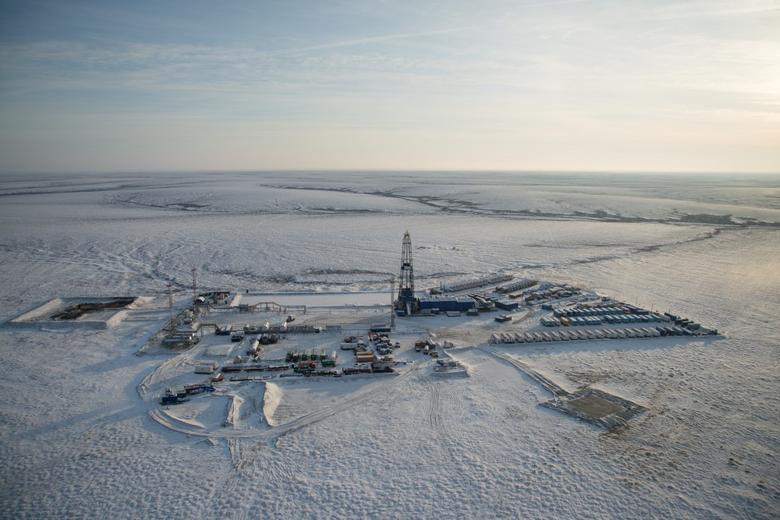
RUSSIA CUTS PRICE

Russia is planning to revamp its fiscal policy to insulate the economy from swings in crude prices, the latest energy producer to prepare an overhaul for the post-oil era.
A proposed budget mechanism would prevent the government from spending excess revenue above a pre-set oil price, Finance Minister Anton Siluanov said in Moscow on Wednesday. The crude-price cutoff would be in the range of about $40 to $50 a barrel, and income received above that will be stowed away in reserves.
"With this rule, the Russian government is trying to break the vicious dependence of the economy on oil via the ruble," said Oleg Popov, a money manager who oversees $300 million of assets at April Capital in Moscow. "What's changing is that the Russian government is signaling to the market participants that the ruble will be more predictable to spur investments into the economy."
Nations from Saudi Arabia to Canada are retooling their economies after the worst oil crash in a generation as efforts falter to stabilize the global market. Russia, its finances reeling after crude fell to a 13-year low in January, is revisiting a fiscal mechanism suspended this year that capped spending based on a backward-looking average for oil.
Fiscal Savings
The new approach in Russia has the backing of the central bank, which has warned that the budget is emerging as a major risk for inflation. The proposal will be submitted for government discussion this fall, according to Siluanov. Authorities are also seeking fiscal consolidation of one percentage point of gross domestic product a year, he said.
"Without a budget consolidation, the economy will slide toward its pre-crisis state, dominated only by commodities and export-oriented industries," Siluanov said Wednesday at his ministry's annual meeting. The budget proposals "should be a long-term reference point for fiscal policy."
The world's biggest energy exporter, enduring its second year of recession, is running the widest deficit since 2010 even as the price of crude recovers from a 13-year low reached in January. Russia scrapped the previous budget rule for 2016 because applying it would have forced the government to draft this year's budget based on an average oil price above $80 a barrel. The nation's main export blend averaged $31.99 in the first three months of the year, according to the Finance Ministry.
Breaking Even
Russia needs oil at $82 to balance its budget, about double the current price of crude, Siluanov has said. The break-even level for last year was $73.10 and is set to drop to $66.10 in 2016, Deutsche Bank AG estimates. While still higher than for the United Arab Emirates or Qatar, that would be the lowest for Russia since 2008, according to the German lender.
Rollercoaster swings in the ruble after a failure by oil producing nations to broker an output freeze at a weekend summit in Doha showed how vulnerable Russia remains to turmoil in the energy market. The currency declined as much as 3.5 percent against the dollar on Monday before rebounding. It traded 0.3 percent stronger at 65.6330 against the dollar as of 6:38 p.m. in Moscow.
Holding Up
Russia's economy "isn't in tatters," Prime Minister Dmitry Medvedev said at the same meeting in Moscow, adding that the labor market was kept stable last year and inflation in check. He reiterated this year's budget deficit gap at 3 percent of GDP.
Under current projections, the government is on course to run a deficit of 3.4 percent in 2016, First Deputy Finance Minister Tatiana Nesterenko told reporters on Wednesday. It reached 2.4 percent last year.
"From lending a hand, the deficit can become an enemy to the Russian economy," Siluanov said.
Oil and natural gas account for about a third of Russia's budget revenue and almost 60 percent of its exports. The 60-day correlation between the ruble and Brent crude reached a record 0.85 on Friday and traded at 0.81 on Wednesday. A value of 1 would mean the assets are moving in lockstep.
Three-month implied volatility, a measure of exchange-rate swings used to price options, is the second-highest globally after Argentina's peso, suggesting investors anticipate strong ruble price fluctuations will persist, data compiled by Bloomberg show.
'Serious' Appreciation
Should oil prices rise to $60 to $70 a barrel, Russia is at risk of "serious" gains in the ruble's real exchange rate if no fiscal consolidation is undertaken, according to Siluanov. That would erode the competitiveness of the nation's companies, he said.
"It's impossible to cope with managing the real exchange rate using only the instruments of the central bank," Siluanov said.
The Bank of Russia, which shifted to a free-float in late 2014, doesn't see the proposed budget rule as a threat to its policy framework, First Deputy Governor Ksenia Yudaeva said on Tuesday.
The central bank has waited for inflation risks to dissipate before restarting the easing cycle it halted after July. Rate setters have kept their benchmark at 11 percent after five reductions in 2015 and even warned last month that their "moderately tight" policy may last longer than previously planned.
"You can't influence the ruble through interest rates in Russia because the economy isn't developed enough yet, that's why the government is forced to resort to such measures" as the budget rule, said Alexei Egorov, an analyst at Moscow-based Promsvyazbank PJSC. "The situation with the budget is catastrophic, that's why the government needs a weak and stable ruble."
-----
More:
РОССИЯ АБСОЛЮТНО КОНКУРЕНТОСПОСОБНА






